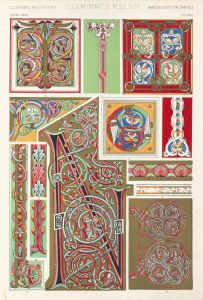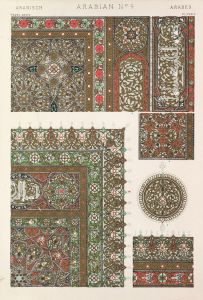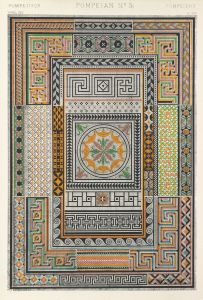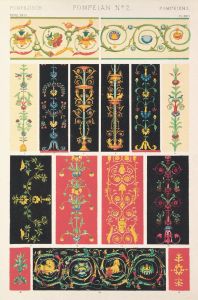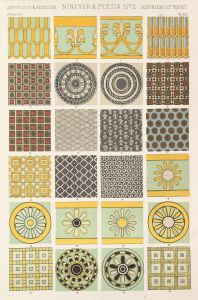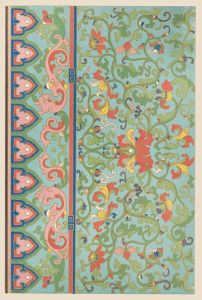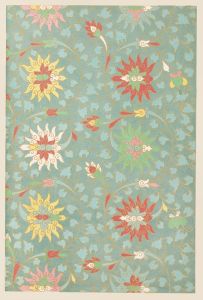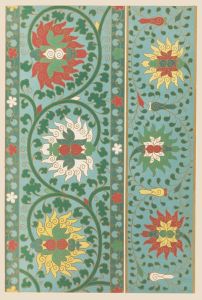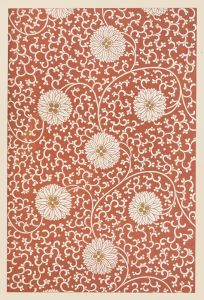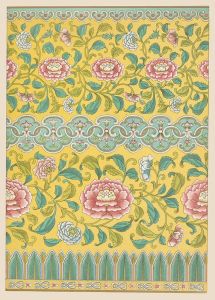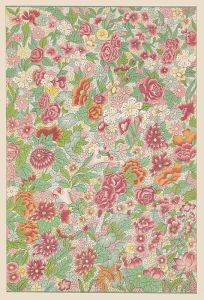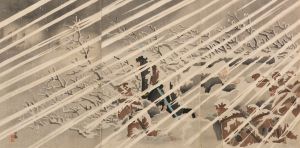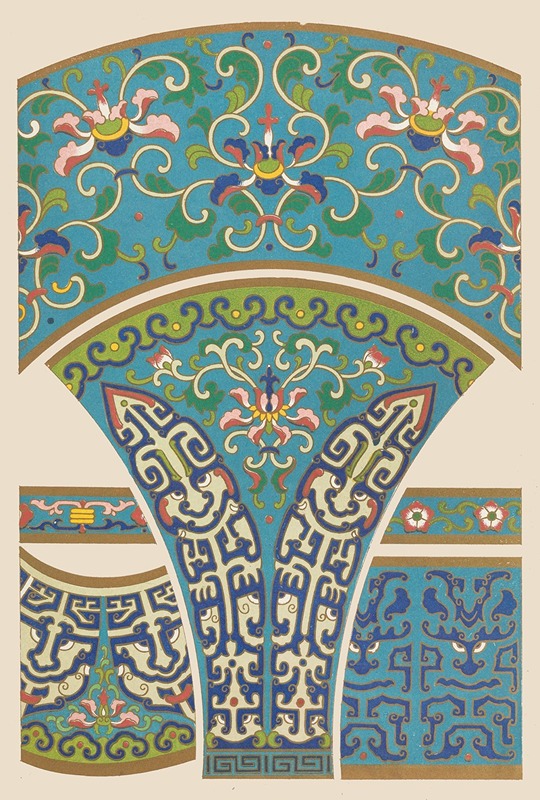
Examples of Chinese ornament, Pl.28
A hand-painted replica of Owen Jones’s masterpiece Examples of Chinese ornament, Pl.28, meticulously crafted by professional artists to capture the true essence of the original. Each piece is created with museum-quality canvas and rare mineral pigments, carefully painted by experienced artists with delicate brushstrokes and rich, layered colors to perfectly recreate the texture of the original artwork. Unlike machine-printed reproductions, this hand-painted version brings the painting to life, infused with the artist’s emotions and skill in every stroke. Whether for personal collection or home decoration, it instantly elevates the artistic atmosphere of any space.
"Examples of Chinese Ornament, Pl.28" is a plate from the influential design book "The Grammar of Ornament" by Owen Jones, first published in 1856. Owen Jones (1809-1874) was a British architect and designer, known for his theories on color, ornamentation, and architectural decoration. His work significantly influenced the design practices of the 19th century, and his book remains a seminal reference in the study of decorative arts.
"The Grammar of Ornament" is a comprehensive collection of design patterns and motifs from various cultures around the world, including Egyptian, Persian, Greek, Roman, Indian, and Chinese. The book aimed to provide a systematic study of ornamental art, showcasing the beauty and diversity of global design traditions. Each plate in the book features meticulously drawn examples of ornamental patterns, accompanied by descriptive text that explains their historical and cultural context.
Plate 28, titled "Examples of Chinese Ornament," specifically focuses on Chinese decorative art. The plate features a variety of intricate patterns and motifs that are characteristic of traditional Chinese design. These include floral patterns, geometric shapes, and stylized representations of natural elements such as clouds, waves, and mountains. The designs are rendered in vibrant colors, reflecting the traditional Chinese palette that often includes reds, blues, greens, and golds.
Chinese ornamentation has a long and rich history, deeply rooted in the country's cultural and philosophical traditions. The patterns and motifs depicted in Plate 28 are representative of the artistic styles that have been used in Chinese architecture, textiles, ceramics, and other decorative arts for centuries. These designs often carry symbolic meanings, reflecting themes such as harmony, prosperity, and longevity.
Owen Jones' inclusion of Chinese ornament in his book highlights the global nature of decorative arts and the importance of cross-cultural influences in design. By studying and documenting these patterns, Jones aimed to educate Western designers about the richness and diversity of non-Western art forms, encouraging them to incorporate these elements into their own work.
"The Grammar of Ornament" was groundbreaking in its approach to the study of design, emphasizing the importance of understanding the principles behind ornamental art rather than merely copying existing patterns. Jones' work advocated for the use of ornamentation that was both aesthetically pleasing and functionally appropriate, a principle that has had a lasting impact on the field of design.
In summary, "Examples of Chinese Ornament, Pl.28" by Owen Jones is a detailed and colorful representation of traditional Chinese decorative patterns. It serves as an important example of the global exchange of artistic ideas and the enduring influence of Chinese art on the broader field of design.





